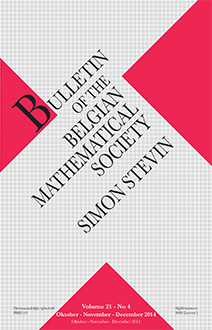Abstract
Let \(X\), \(Y\) be sets and let \(\Phi\), \(\Psi\) be mappings with domains \(X^{2}\) and \(Y^{2}\), respectively. We say that \(\Phi\) and \(\Psi\) are \emph{combinatorially similar} if there are bijections \(f \colon \Phi(X^2) \to \Psi(Y^{2})\) and \(g \colon Y \to X\) such that \(\Psi(x, y) = f(\Phi(g(x), g(y)))\) for all \(x\), \(y \in Y\). Conditions under which a given mapping is combinatorially similar to an ultrametric or a pseudoultrametric are found. Combinatorial characterizations are also obtained for poset-valued ultrametric distances recently defined by Priess-Crampe and Ribenboim.
Citation
Oleksiy Dovgoshey. "Combinatorial properties of ultrametrics and generalized ultrametrics." Bull. Belg. Math. Soc. Simon Stevin 27 (3) 379 - 417, august 2020. https://doi.org/10.36045/bbms/1599616821
Information





